At the only U.S. tuna auction, emotions run high over issues of sustainability.
Brooks Takenaka is having a bad day. The boats were slow to unload this morning, and at 6:30 a.m., the Honolulu Fish Auction is already behind schedule. When I hold my hand out to introduce myself, he greets me with a question: “Is that all you brought?”
He’s talking about my clothes. Even though the forecast promises 82 degrees of sunny, Hawaiian weather, walking into the auction house is like walking into a giant refrigerator. If you deal in fresh fish, you’ve got to keep it cool. And so, when Takenaka looks at me, he sees a mainlander, dressed for downtown Honolulu, expecting a comfortable tour.
When I display my jacket, he grunts, and motions me to follow him down the dock that abuts the auction house. We pass men—all men—shoveling ice into large, blue plastic totes. Beneath the shavings are fish, fresh off the boats lining the side of the pier. The silver and black stripes of skipjack tuna, or aku, flash in the sun before disappearing under a fresh coat of ice.
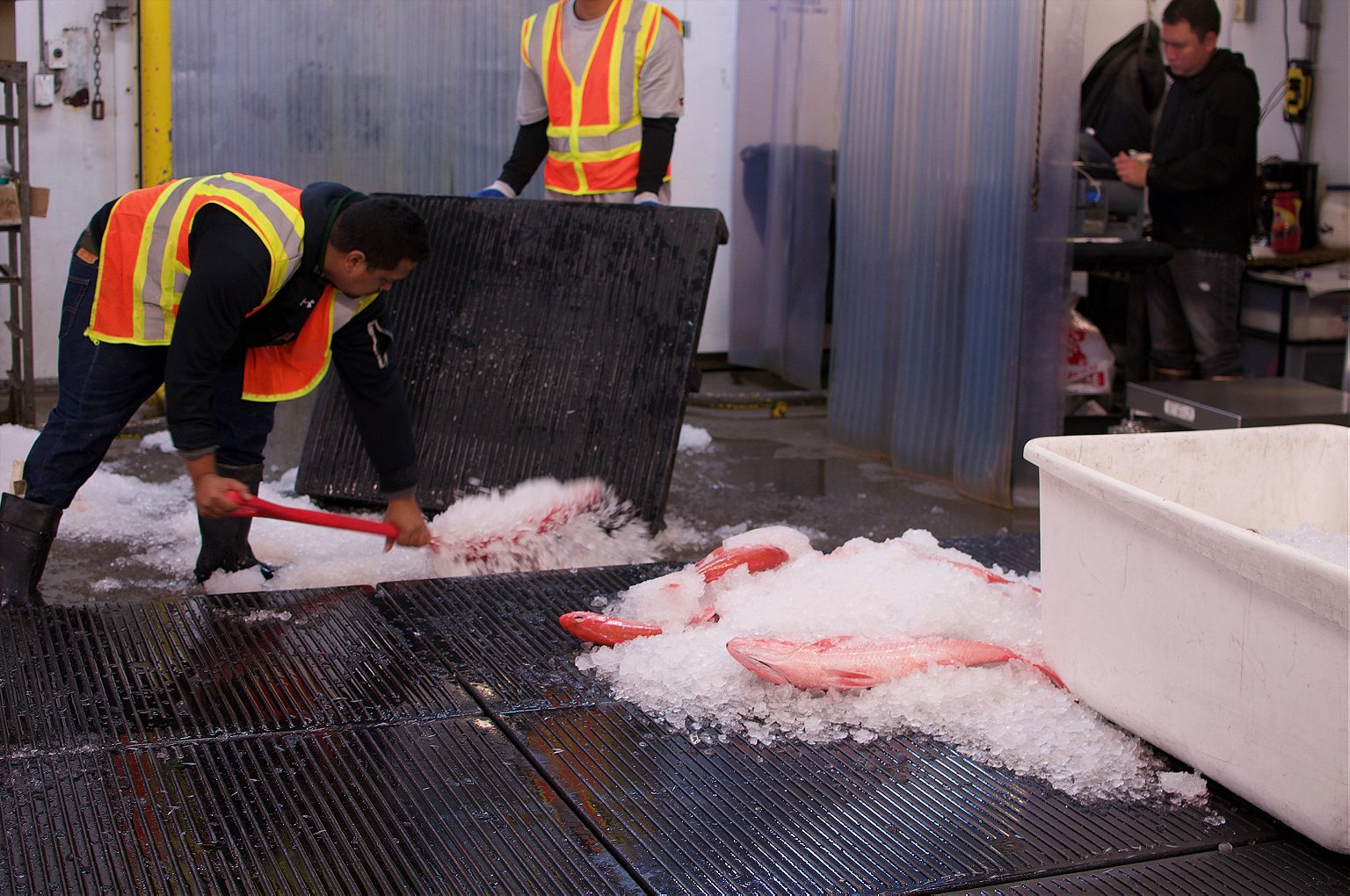
We walk to the end of the pier, where we stop to watch Lady Luck unload her catch. “I was swimming before I could walk,” Takenaka tells me. Huge, silver fish dangle by their tails, while a plant worker stretches out his gaffing hook to guide them off the boat. Bright yellow finlets line their spines, looking sharp enough to cut.
Takenaka comes from a fishing family. His grandfather was a fisherman, as were his father and uncles. He’s short, with excellent posture and wire-rimmed glasses. He has a stiff, wiry moustache that—I will find out later—becomes animated when he’s angry.
“Fish has been something I’ve always been interested in,” Takenaka explains. He studied marine biology—and briefly worked for the National Oceanic and Atmospheric Administration (NOAA) before switching back to the private sector. For the past twenty years, he’s worked for the only tuna auction in the U.S., the Honolulu Fish Auction.
In the United States (and much of the rest of the world) most fish is sold in bulk to wholesalers. But not at the Honolulu Fish Auction. Anyone can walk in and buy fish directly, though tourists are encouraged to book a guide ahead of time. It can get competitive on the floor; woe to the stray amateur who gets in the way of a deal.
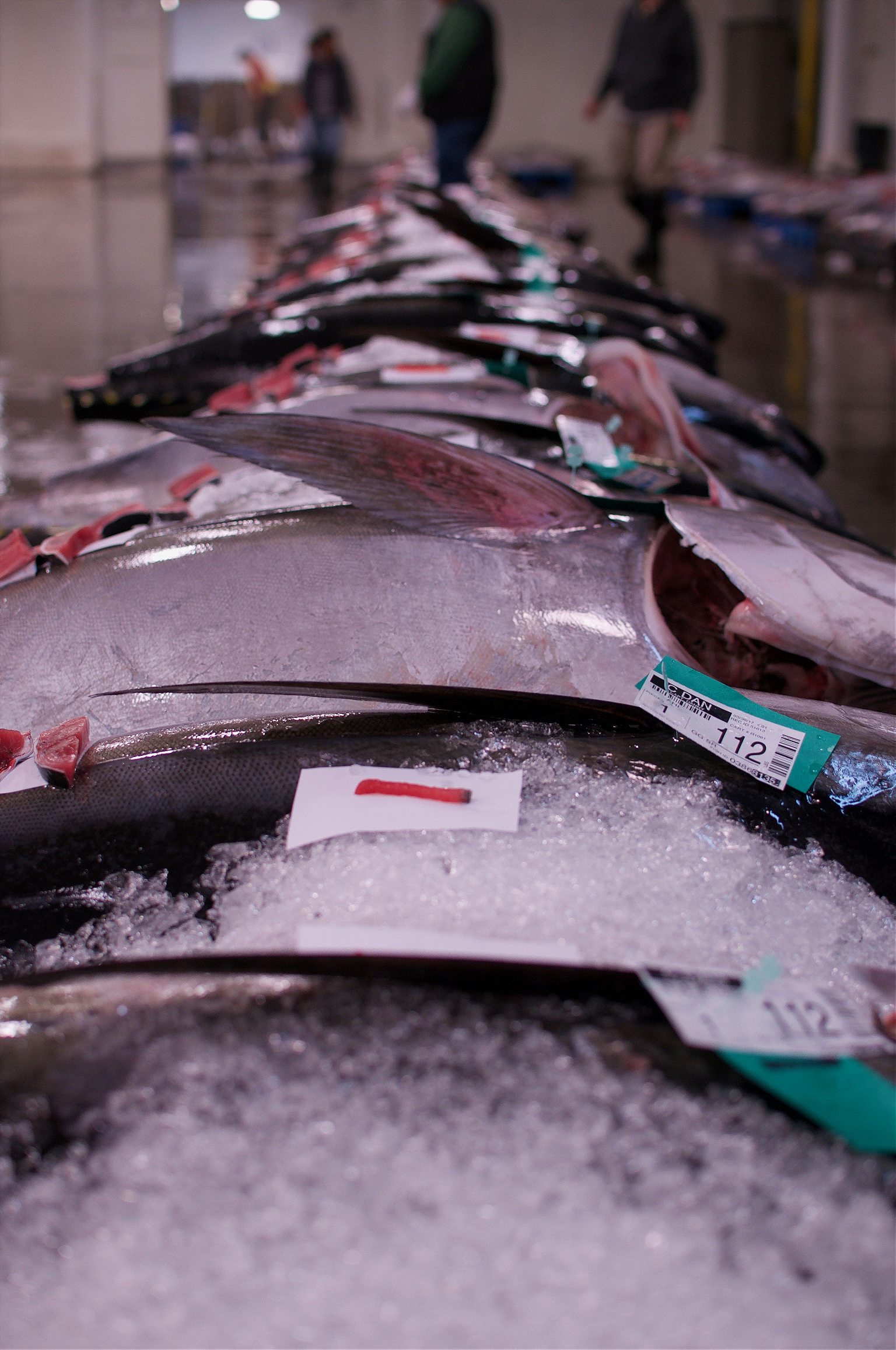
Auction prep starts at 1 a.m., when fishermen dock and begin unloading their catch. (The word fisherman encompasses both men and women who make their livings catching fish. And yes, there are many women who do just that. But aside from the woman in the warehouse’s front office, I only see men at today’s auction.) As assistant manager, Takenaka usually shows up between 4:30 and 5:00, when the auction finally begins. Buyers are next—representatives from Hawaii, California, and even Japan. On the morning that I’m visiting, Takenaka greets three restaurateurs from New York.
Anyone who enters the building must first step in a tray of disinfectant. Thick, plastic strips hang like curtains and guard the entrances, keeping the warehouse cool. A few men loiter by the door. They’re dressed like they came from a dock in Alaska—thick rubber boots, sweatshirts, and a jacket. “Guy Tamashiro,” Takenaka says, motioning for one of them to step forward. “The retail icon of seafood here in Hawaii.”
Tamashiro manages to look both bashful and welcoming as he holds out his hand in a greeting. He’s the buyer for Tamashiro Market, a local seafood store that’s more than 75 years old. The market sells fresh—and only fresh—seafood. Most of the fish is local, but the live lobsters and shellfish are flown in from the mainland.
Tamashiro likes the auction because he doesn’t buy fish in bulk. Instead, each fish is carefully examined and handpicked, keeping the quality high. There’s a reason Tamashiro Market is known for having the best poke on the island.
Most days, Tamashiro shows up with an idea of what he wants. He walks the rows of fish, laid out neatly and marked with information about their size and the boat that caught them.
The real pros can tell the quality of a fish just by touching the skin
Pearly opah, red snappers, and long, pointed ono are being sorted at the far end of the warehouse. Mahi-mahi have vibrantly colored thick, square heads. Billfish—gigantic creatures sporting long, sharp, spear-shaped appendages in the front of their faces—are displayed with their heads, and bills, cut off.
Tuna get to keep their heads intact. Instead, a small section of flesh is cut from their tail, along with a three-inch “core” to show if the texture remains firm throughout the entire body. But the real pros, people like Tamashiro, can tell the quality of a fish just by touching the skin. And, of course, by the way the meat looks.
“This is cooking grade,” Tamashiro points to a tail that’s a faded pink. “You look at something like this,” he gestures to a fish with deep, ruby-red flesh. “It’ll be a lot more expensive.”
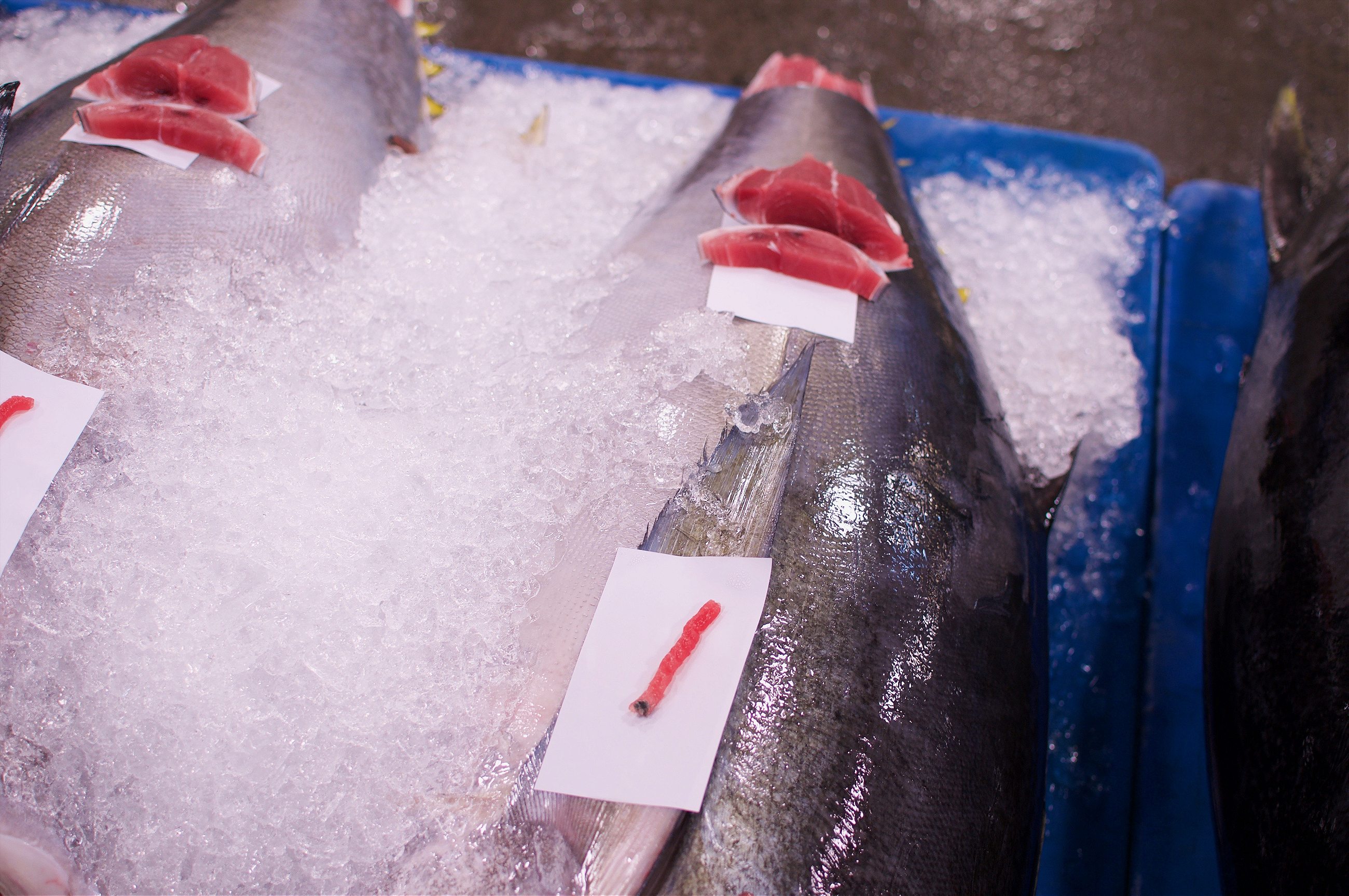
But relying solely on color is a novice move. Tamashiro stops by another tuna that’s even lighter than the first one. It’s almost impossible to catch, but when I lean closer, I see a maze of thin, white veins of fat. “It’s like the marbling of a Wagyu beef,” he says. “This one will be pricey.”
We continue down the line, with Tamashiro bounding from one fish to the next. Unlike most of people in the warehouse, he seems genuinely excited to be here.
“The great thing about seafood is that it’s one of the few things that tastes good and is good for you!” Tamashiro says over his shoulder, before moving on to the next fish.
Normally, someone like Tamashiro would not have time to show me around. When I ask him what a typical day at the auction is like, he shrugs. “We keep going, going, going,” he says. The space is filled by the sound of the auctioneer and bidders, and no one has a chance for a break. But on a morning like this, when the boats are running behind, he’s got some time on his hands.
The auction starts when the bell rings. Men shuffle along the rows of fish in thick rubber boots and coats. The auctioneer stops at each fish, taking individual bids. Most of the fish at the auction will be served raw, in poke or sashimi. On busy days, buyers can go through 100,000 pounds of fish. Today, it’s sparse. It gives me more time to talk with Takenaka. But it doesn’t help his mood.
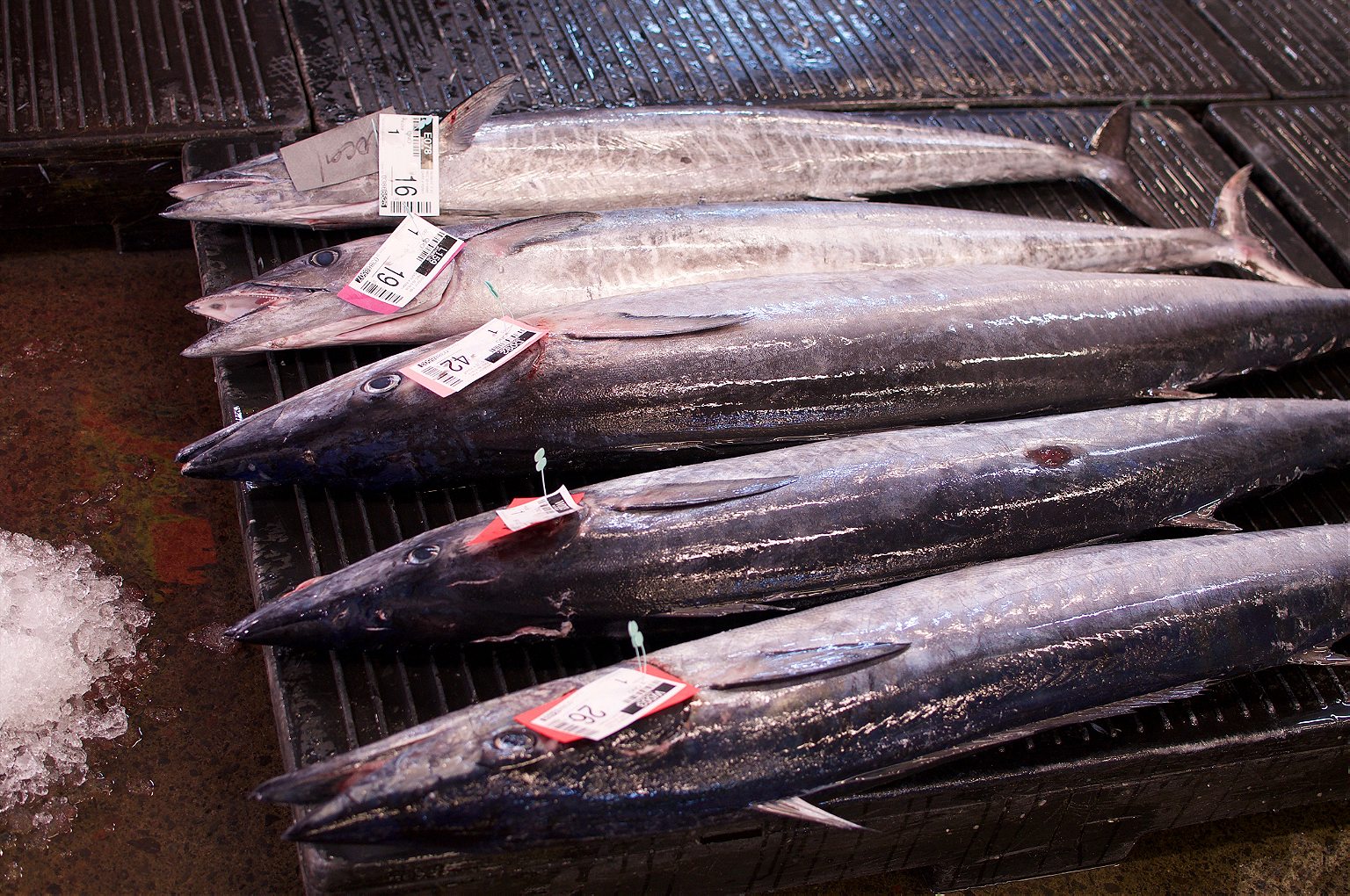

I finish pacing the length of the warehouse, back and forth among rows of fish. When Takenaka leads me outside again, through the standing trough of disinfectant and the thick plastic curtains, both of our glasses fog up in the morning heat.
We pause to talk on the dock, watching boats unload.
“Fishing has not been the same like before,” says Takenaka. “When sustainability became the priority, we started looking at things with a totally new perspective.”
For many years, people in the industry were interested in two things: how to catch more fish, and how to make people buy more fish. Now the focus, at least in America, has shifted to environmental sustainability, according to Takenaka. And that’s a shift that has put lots of fishermen on edge.
We’re back at the edge of the pier, watching a boat unload huge, glistening bodies. Takenaka’s voice rises, and he leans in close, tapping me on the shoulder. “There’s a lot of misconceptions that people, lay people, create on their own accord. They get emotional about things, and then before you know it, especially today, bullshit is truth.”

But fish stocks have been in decline. And it’s hard to believe that in Takenaka’s 60-odd years of being immersed in the business, he hasn’t noticed a decline in the number of and size of fish, as he claims. When I used to work in seafood in Alaska, the older fishermen would tell tales of catch after catch of jumping, shaking salmon, and gigantic halibut regularly breaking three or four hundred pounds. That summer, I never hauled a fish that weighed more than me.
In 1997, American fishermen caught 83.5 million pounds of tuna. But over the past twenty years, that number has dropped by almost a quarter, to 60.9 million pounds. And while landings—the term for the amount of fish harvested and brought to shore—of certain fish, like bigeye tuna, have tripled since the 90s, that’s not always a sign of environmental health. If more boats are catching bigeye, then yes, it could be because there’s lots of those fish in the sea. But a more likely scenario is that people started to buy bigeye, so boats started to catch it.
“Based off the current stock assessment, overfishing is occurring,” Dr. Michael Seki, director of the Pacific Islands Fisheries Science Center at NOAA, tells me. According to a 2014 report from the Western and Central Pacific Fisheries Commission, bigeye mortality rates were about one and a half times higher than the target set by fishery scientists. A 2015 stock assessment found that fishermen caught nearly 270 million pounds of bigeye. (That’s significantly less than the highest bigeye catch recorded: over 380 million pounds in 2004.) That same assessment found that fish mortality rates have increased over time, with current levels at one and a half times as much as the maximum sustainable yield.
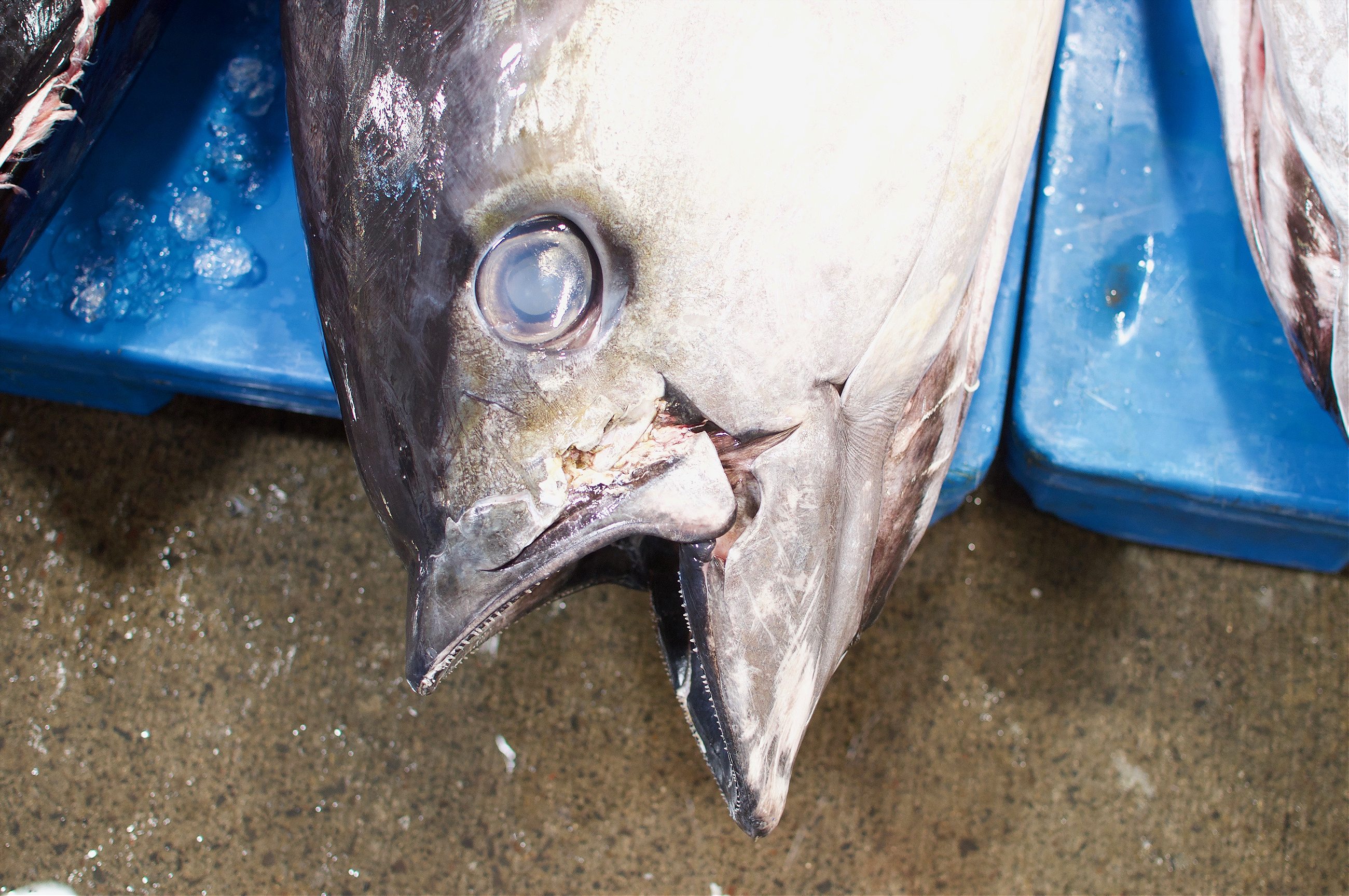
Throughout our discussion, Seki hedges his answers. He’s reluctant to make claims about the fishery, and seems relieved when I ask him whether these numbers should be taken as gospel.
Seki tells me to imagine a forest. “Let’s say you want to know how many trees of one variety are in that forest. How do you go about doing that?”
By counting them, I say. Yes, he says, but adds, “imagine you can’t see what you’re counting.” And imagine that those trees float, not just hovering in the air, but migrating hundreds and sometimes—depending on the species—thousands of miles. Try counting that.
Fish data is based on murky information: complex algorithms, the previous year’s landings, and guesswork. “Is our method perfect?” Seki asks. “No. But it’s the best information we have.”
So when NOAA or conservationists say that bigeye tuna are overfished, people like Takenaka disagree.
During our conversation on the dock, Takenaka gets more and more animated. He is angry now, leaning in with crossed arms. “Americans are the most regulated and monitored fishermen in the world. Why are we going after the American fishermen?” He asks. “What’s happened overall in terms of the demand for seafood, my dear? People are going to try and accommodate that growing demand.”
The U.S. does indeed have some of the strictest fisheries management laws in the world; less regulated nations are able to export cheaper options to hungry consumers. Takenaka is voicing the anger and frustration that lots of American fishermen feel today. They find themselves squeezed between falling prices, encroaching regulation, and consumer demand, with very little space to move. They feel that they’ve taken on the burden of sustainability while consumers choose cheap imported fish over American products.
There are international bodies that pass fishing regulations for open waters. Individual countries control the oceans—including the fish stocks—up to two hundred miles off of their shores. But migratory species like tuna and swordfish are much harder to regulate.
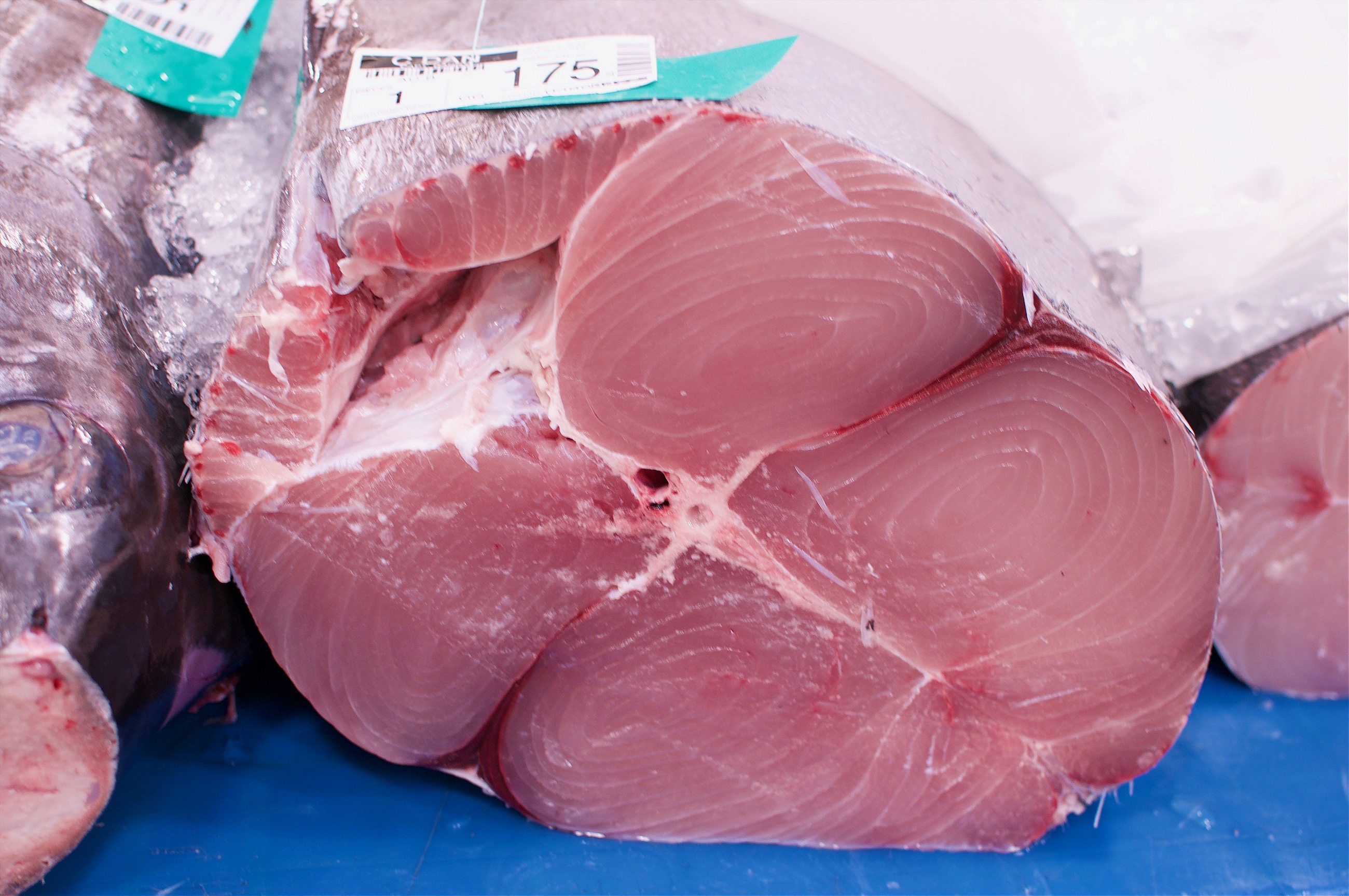
Let’s return to bigeye tuna. The Honolulu Fish Auction’s fleet, the boats Takenaka manages, catches over ninety percent of the bigeye caught in the U.S. but only three percent of bigeye caught in the Pacific. The fish spawn widely across the equatorial Pacific Ocean, spanning from Hawaii to Java, from Japan to New Zealand. They fully mature after four years and can live up to sixteen.
Hawaiian fishermen are competing with their Japanese, Taiwanese, Indonesian, Thai, Korean, and Ecuadorian counterparts. Some fleets have more stringent regulations than others. And if spawning grounds are in waters that are frequently mismanaged or polluted, like the oceans around Indonesia, that could affect fish stocks in places as far away as Chile.
The stakes are high. In 2014, Pew Charitable Trusts estimated the economic impact of the top seven tuna species as $42 billion, a half billion more than in 2012. Global landing values were worth about $10 billion. That same year, NOAA recorded about $135 million of U.S. landings, or 1/74 of the global catch.
Takenaka’s fleet was one of the first to participate in a nation-wide observer program, where government scientists were placed, randomly, on boats as live monitors. Almost all American fishermen pay expensive licensing and permit fees. They often use cleaner, but more expensive, fishing techniques. The quality of the fish tends to be much higher, too. (A recent outbreak of hepatitis A was traced back to tuna steaks from Indonesia.)
American-caught seafood is more expensive
We see these efforts reflected in prices. American-caught seafood is more expensive. Perhaps that’s why American consumers import over ninety percent of their seafood while also demanding cheaper prices from their local fishermen.
So when American fishermen are accused of mistreating their ecosystem, of overfishing and underappreciating their environmental impact, they can get incensed. “I may sound a little bit emotional at times,” Takenaka admits. “It’s very frustrating.”
“But how many people stop to think about the realities?” He asks. “You going to save all the fish? Nobody going to get fed? See, I think a lot of people forget that side of the equation. Protecting resources and sustainability is fine, but when you get down to discussing and defining sustainability, it’s sustainability of what and whom?”
Do thriving oceans exclude thriving fishermen? How can the people who live in resource-rich places balance the need to make a living now with the decades to come? This pull between sustainability and extraction isn’t unique to Hawaiian fishermen, but at a time when poke restaurants proliferate across the nation while bluefin tuna are being eaten into extinction, the people working at this auction find themselves at the center of a global debate over our oceans.
The water by the pier is Hawaiian blue. Even in downtown Honolulu, in a place surrounded by grey concrete and shipping containers, the water glows a deep, brilliant color, rich and clean. The coming day promises to be hot.
Takenaka came to work at four or five that morning, he can’t quite remember. By the time we wrap up, he’s already halfway through his day.
The boats were slow to unload this morning. Two more are still waiting. Everyone will stay hours past their quitting time to finish, including Takenaka. He stands by the dock as the tuna float above him, dangling on lines looped around their tails.They say the best fish, the freshest fish, should look as if they’re still alive.
Together, the tuna weigh hundreds of pounds. A fisherman guides them down to the pier, hands on their sides. Takenaka watches the fish lower to the ground, then follows them into the warehouse. The next phase of the auction is about to start.